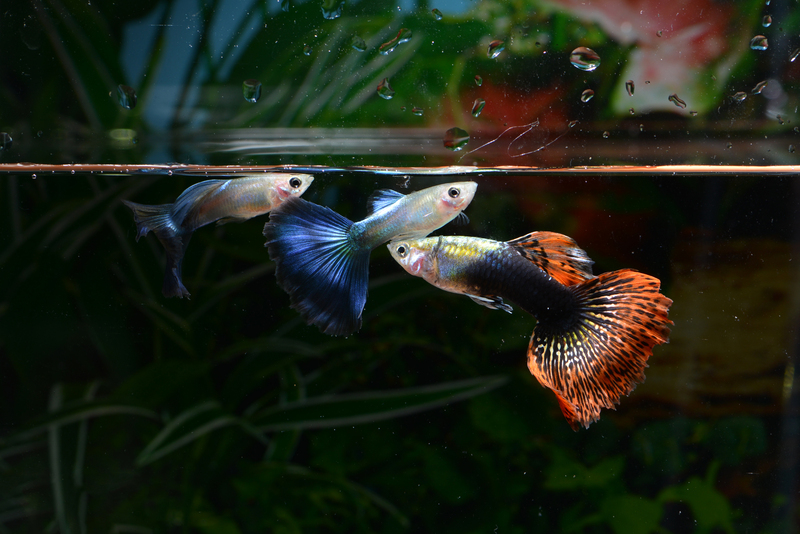How to Protect Your Freezer When You Take a Break from Using It
A freezer is an invaluable appliance in any household, helping you preserve food for extended periods. However, there are situations when you may need to take a break from using your freezer--for example, during extended vacations, renovations, temporary moves, or seasonal property closures. If you plan to leave your freezer unused for weeks or months, it's crucial to take proper steps to protect it from damage, unpleasant odors, or even pests. Knowing how to protect your freezer during periods of inactivity will keep it in optimal condition and save you repair bills down the road.
Why It's Important to Protect Your Freezer During Downtime
Many people assume that since a freezer is a sealed appliance, it will be fine if left alone. However, leaving a freezer unused without preparation can lead to numerous issues, including:
- Mold and mildew growth inside the unit due to moisture left behind
- Bad odors that develop from residual food spills or bacteria
- Rust and corrosion on metal parts due to condensation
- Mechanical breakdowns caused by improper storage conditions
- Electrical issues from long-term disuse or power surges
- Pest infestations seeking warmth or food remnants
Taking the right steps to protect your freezer while not in use ensures it will function properly when you start using it again. Let's look at a comprehensive guide to inactive freezer protection so you can avoid costly mistakes.

Step-by-Step Guide: How to Protect Your Freezer When Not in Use
1. Remove All Contents
The first step in protecting your freezer during inactivity is emptying it completely. Even small food particles or forgotten items can create odors and attract pests.
- Check every corner, shelf, and drawer for leftover food or packaging
- Donate, consume, or discard food items as needed
- Wipe down packaging to avoid spills during removal
2. Defrost and Clean Thoroughly
A clean freezer is far less likely to develop smells, mold, or bacteria. Defrosting your freezer also reduces the risk of water damage from melting ice when the power is off.
- Unplug the freezer or turn off the power supply.
- Open the door and allow all ice to melt. Place towels around the base to absorb water.
- Remove all shelves, baskets, and detachable components. Wash them in warm soapy water.
- Wipe the interior with a solution of baking soda and water (about 2 tablespoons of baking soda per quart). This neutralizes odors and helps with stain removal.
- Dry all surfaces completely with a clean towel. Pay extra attention to corners and seals.
Tip: Avoid using harsh chemicals, as they can leave residues and damage internal surfaces.
3. Inspect for Damage and Maintain Seals
With the freezer empty and clean, inspect the door seals and interior for signs of wear, mold, or damage.
- Look for cracks or tears in the gasket (rubber seal around the door)
- Wipe the seal gently with soapy water if dirty, and dry fully
- If the seal is loose or damaged, replace it to prevent moisture and pest intrusion
A tight seal ensures that the freezer stays dry and uncontaminated during downtime.
4. Dry Completely to Prevent Mold Growth
Any residual moisture inside your freezer can lead to mold, mildew, and bad smells. Leave the door open for several hours to air out the appliance.
- You can use a portable fan to speed up the drying process
- Check drawers and compartments for hidden moisture
5. Deodorize the Freezer
Besides cleaning, take steps to keep your freezer smelling fresh during its period of non-use. Consider placing one of the following natural deodorizers inside:
- An open box of baking soda absorbs moisture and odors
- A container of activated charcoal for extra odor absorption
- Dry coffee grounds or a bowl of dry rice also help neutralize smells
6. Leave the Freezer Door Ajar
The most effective way to prevent mold and mustiness is to prop the door open while the freezer is out of commission. Use a towel, wedge, or the built-in "vacation mode" latch if available.
- Keep the door or lid open at least an inch--enough to allow airflow but not entry for rodents
- Prevent the door from closing accidentally by securing it in place
7. Unplug the Freezer or Turn Off Power
If you'll be away or not using the freezer for more than a couple of weeks, disconnect the appliance from its power source. This saves energy and reduces fire risk.
- After unplugging, protect the plug from dust and pests by wrapping it in a plastic bag
- If your freezer is hardwired, consider shutting off the circuit breaker
CAUTION: Never leave a non-defrosted freezer unplugged with the door closed! The resulting condensation can create a perfect environment for mold and bacteria.
8. Move the Freezer Carefully (If Needed)
If you're temporarily relocating or renovating, ensure safe handling of your freezer:
- Keep the unit upright to avoid damaging the compressor
- Secure all loose parts inside with tape
- Cover the freezer with a moving blanket to shield it from dust and scratches
After moving, wait a minimum of 4 hours before plugging it in (24 hours for chest freezers).
9. Store in the Right Environment
If storing your unplugged freezer in a garage, basement, or storage unit, maintain the following conditions:
- Dry location to prevent rust and condensation
- Away from direct sunlight or heat sources to avoid warping
- On a level surface to protect internal components
Extra Tips for Freezer Protection During Extended Downtime
Use Rodent and Pest Deterrents
If your freezer is stored in an area prone to rodents, it's wise to use natural repellents nearby. Mothballs, peppermint oil on cotton balls, or commercial rodent deterrents placed around (not inside) the unit can keep pests away.
Check the Freezer Periodically
If you can, inspect your unused freezer every few weeks to ensure no moisture, pests, or mold develops. Wipe away any signs of trouble early.
Label the Freezer
Place a note or tag on the freezer door indicating it's clean, unplugged, and meant to remain slightly open. This prevents well-meaning family, friends, or workers from inadvertently closing it.
Common Questions About Protecting Unused Freezers
Q1: Should I ever leave my freezer plugged in when not in use?
If you'll only be away for a short period (under two weeks) and the freezer is well-stocked, you can leave it running. Make sure it's not overloaded and ask someone to check it during your absence. For longer breaks, it's best to empty and unplug.
Q2: What if my freezer has a built-in vacation mode?
Some modern freezers have a "vacation" or "holiday" mode, which keeps the freezer running at a reduced temperature and increases efficiency. If you use this setting, still ensure the freezer is clean, well-sealed, and not overloaded.
Q3: How do I prevent bad odors in my unused freezer?
Complete cleaning, drying, deodorizing, and leaving the door ajar are essential to avoid odor buildup. Natural deodorizers like baking soda or charcoal provide extra protection.
Q4: Can I store my unplugged freezer outdoors?
It's generally not recommended to store an unplugged freezer outside, as exposure to moisture, extreme temperatures, and pests can cause major damage. If you must, cover the appliance with a weatherproof tarp and elevate it off the ground.
Q5: What happens if my unplugged freezer is accidentally closed?
If the door is accidentally shut, mold and mildew can develop within days. If this happens, clean and dry the freezer thoroughly before reuse, and ventilate it until all traces of odor and bacteria are gone.

Preparing to Use Your Freezer Again
When you're ready to put your freezer back into service after storage:
- Inspect the interior and gasket for cleanliness and damage
- Remove any deodorizer
- Plug the freezer in and let it run empty for a few hours
- Wipe it down and check that it's achieving the correct temperature (usually -18?C or 0?F)
- Slowly restock with fresh or frozen foods
Conclusion: Keep Your Freezer Protected, Even When Not in Use
Understanding how to protect your freezer when you take a break from using it is about more than just unplugging it. It requires a few mindful steps:
- Remove all food to avoid infestation and smells
- Clean and dry thoroughly to prevent mold and rust
- Deodorize with a safe, natural substance
- Leave the door slightly open and unplug
- Store in a dry, safe environment with periodic checks
These essential steps will not only preserve the appliance but extend the overall lifespan of your freezer and give you peace of mind during your break. Whether for a vacation, moving houses, or closing a seasonal home, taking care of your temporary unused freezer will pay off when it's time to return to daily life.
More Freezer Maintenance Tips:
- Regularly inspect electrical cords and plugs for wear
- Avoid placing heavy items on the closed lid or door of a chest freezer
- Let your freezer sit upright for at least 4-24 hours after moving before reconnecting
For even more comprehensive guides on appliance care and freezer maintenance, bookmark this page and explore our other helpful resources!



